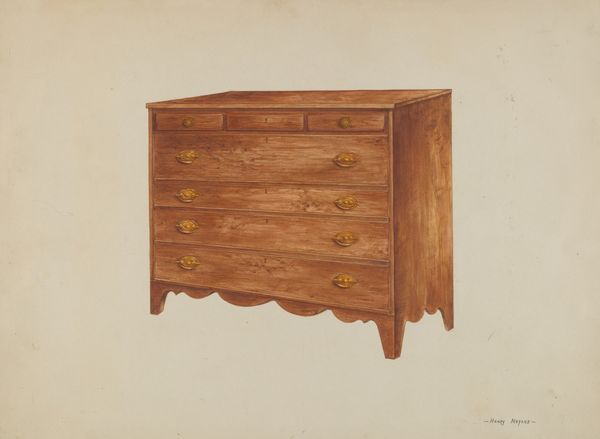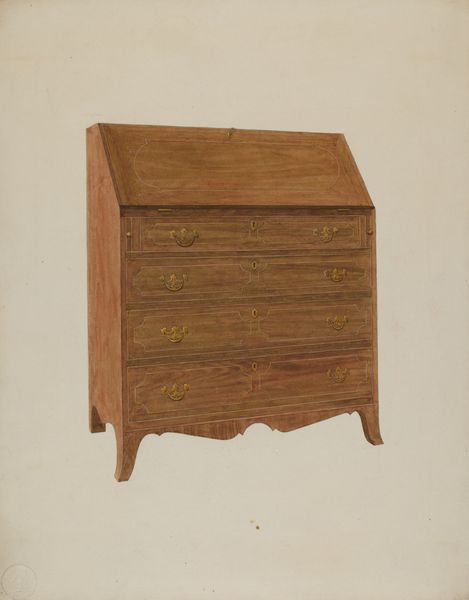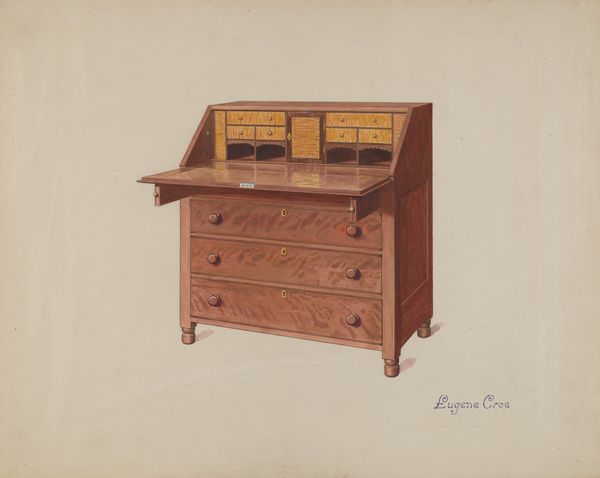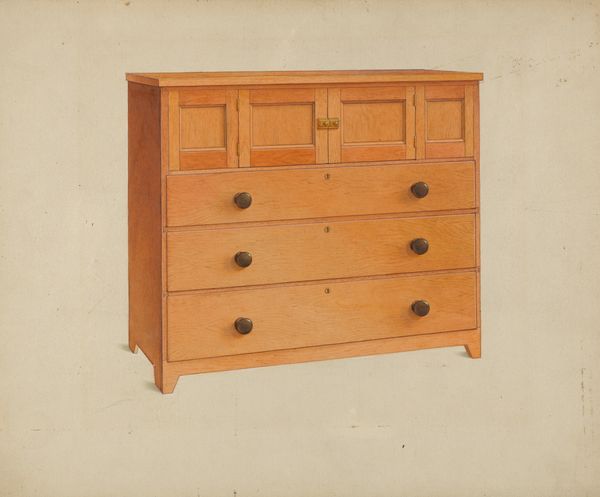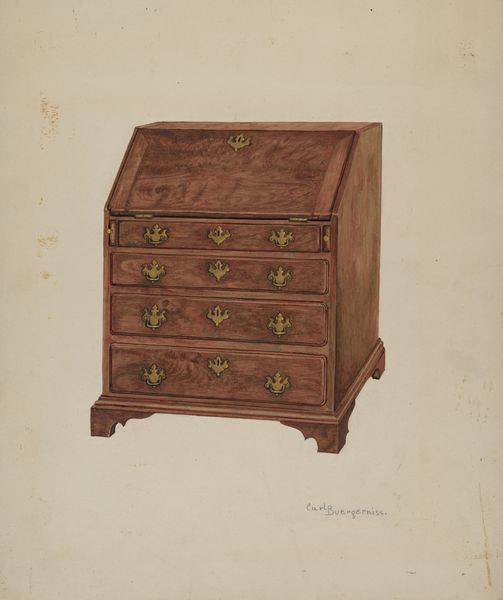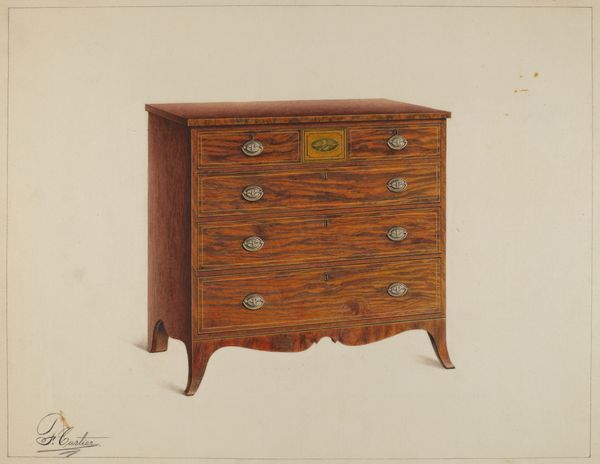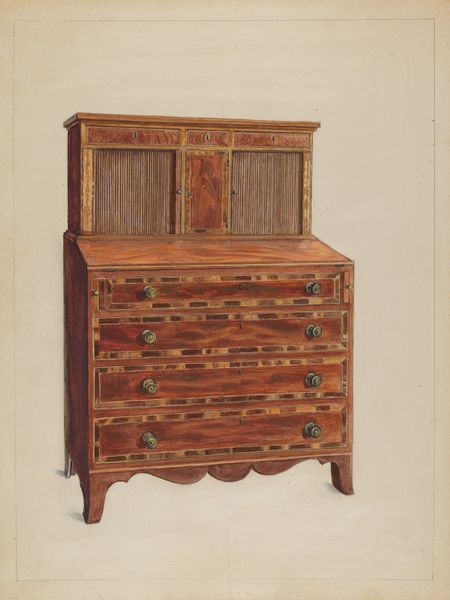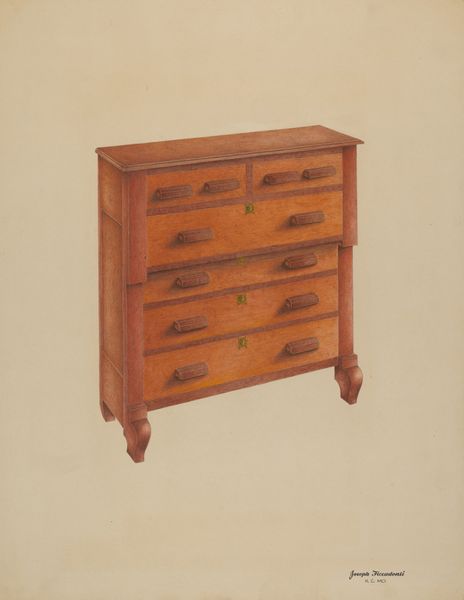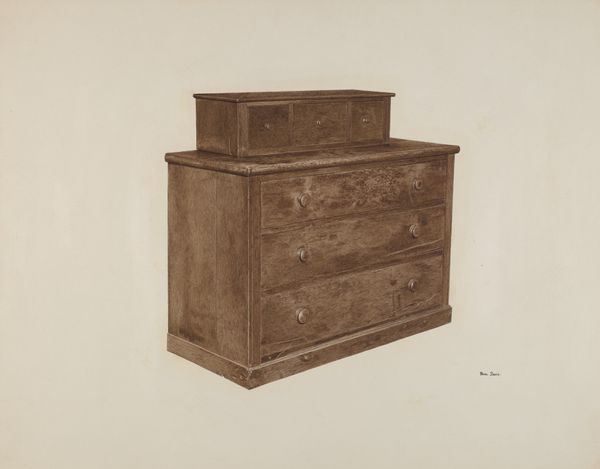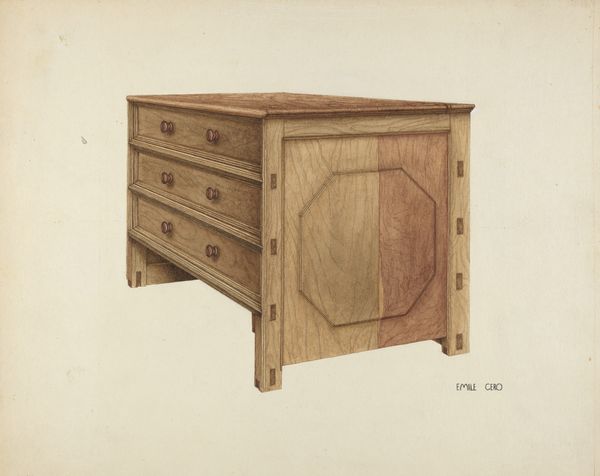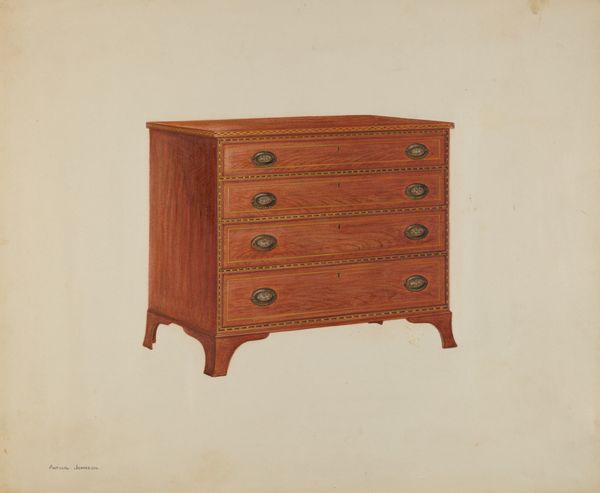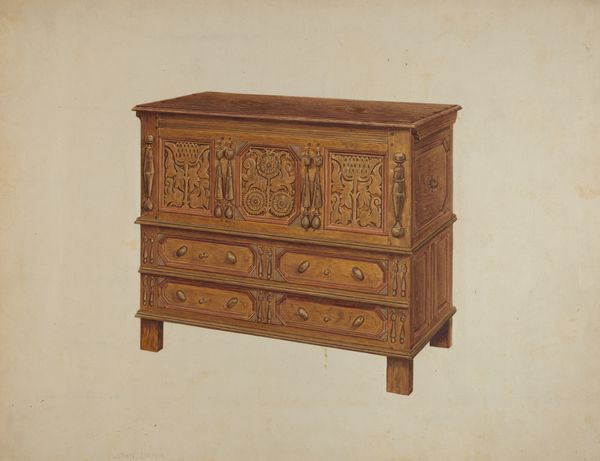
drawing, coloured-pencil
#
drawing
#
coloured-pencil
#
charcoal drawing
#
coloured pencil
#
watercolour illustration
#
academic-art
#
watercolor
Dimensions: overall: 22.8 x 27.9 cm (9 x 11 in.) Original IAD Object: none given
Copyright: National Gallery of Art: CC0 1.0
Curator: This artwork, simply titled "Desk," was created by David S. De Vault between 1935 and 1942, using coloured pencils and drawing techniques. It's a rather charming depiction, wouldn’t you agree? Editor: Yes, and I find it immediately… orderly. The desk’s geometric precision dominates; it's a study in verticals, horizontals, and carefully placed curves, especially with the brass fittings popping. The artist's concern for rendering every surface in subtle detail is quite arresting, like he’s trying to materialize the essence of 'desk-ness'. Curator: Absolutely. Consider that a desk, throughout history, has been a symbol of commerce, governance, and intellectual pursuits. The artist gives us, I think, a visual echo of those meanings. The many compartments and drawers subtly imply the secrets, transactions, and stories contained within its structure. A fascinating snapshot of social structures visualized. Editor: And structurally, that play with implied containment is key, the texture invites you to consider how materiality implies narrative. This drawing utilizes perspective effectively but favors a high degree of verisimilitude across the entire form. Is this a nostalgic look at pre-industrial craftsmanship? Curator: It’s quite plausible, given the period in which it was created. The image might evoke the perceived stability of a time before mass production shifted labor patterns; certainly, this depiction is invested in a very precise sense of craft, maybe an idealized one, removed from industrial-era anxieties. But those curves up top echo earlier architectures. Editor: Yes, the semiotic echo chamber expands into architectural themes— the Gothic or neo-Gothic arches subtly point at a grander scale. But ultimately, it is De Vault's attention to surface qualities that stands out, almost elevating the mundane into the monumental. Curator: Perhaps the desk isn't just furniture; it’s a container of values about craftsmanship, security, knowledge and order. Thanks to this piece, we gain insight into what these symbols meant during its moment. Editor: I can’t help but wonder at its capacity to suggest stability in that specific moment between the wars, with a subtle yet strong visual syntax. Curator: I wholeheartedly agree; it speaks volumes through these muted colours.
Comments
No comments
Be the first to comment and join the conversation on the ultimate creative platform.
